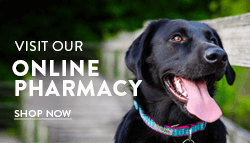What should I do when I first get my pet home?
Just like with humans immediately after surgery or anesthesia, sometimes you just need to lie down and go back to your happy place. Rest is the best thing to recover from this event. Create a comfortable, quiet space for them to just chill and relax in.
Pets though, often don’t understand what they’ve been through, and how to keep themselves rested. Here are some guidelines to follow:
- Keep them on the floor
- Keep them aways from other pets and children
- No jumping or running
- No stair climbing
- No playing or roughhousing
Has my pet been crying?
No! (We would never make them cry.) We lubricate their eyes while they are under anesthesia since they cannot blink. The lubricant, however, can make the eyes look a little moist as if “tearing” after, however.
How should I care for the incision?
If your pet has an incision, and if you’ve never seen sutures before this can be a bit startling. Remember that some swelling and redness or even mild bruising is normal for up to 2-3 days after surgery, but this should subside and the incision should be looking better with each passing day.
- Monitor the incision daily for redness, swelling, discharge, and tenderness
- No bathing or getting the incision wet
- Monitor your pet carefully to make sure they are not licking the incision (those e-collars are a pain, but are SO MUCH BETTER than having to redo an incision!)
- Never put anything on the incision unless specifically told to do so by your veterinarian
- If the incision gets dirty, it is ok to gently clean it with a damp paper towel
- Don’t be afraid to email us a picture if you are unsure if it is ok
How do I know if my pet is in pain?
Surgery can be painful! If we would expect pain control for ourselves, our pet patients also receive it. If your pet is in pain, please call us right away so we can help. Signs of pain include:
- Crying
- Trembling
- Restlessness/unable to settle
- Not eating
- Biting or growling if you get near the surgery site
We’ve prescribed pain medication for your pet to take at home. Be sure to give the medication as directed, but if you feel your pet is still in pain, please call us so that we can adjust or make changes in your pet’s pain management.
My pet is not eating after surgery - What should I do?
Although we do include medications in their protocol to reduce nausea, stomach upset is a common occurrence after anesthesia and should pass within a couple of days. Offer small, frequent meals as well as small amounts of water at a time. Follow all instructions from us about nutritional requirements. Other tips:
- Many pets won’t eat their regular, dry kibble immediately following surgery
- Consider a recovery diet such as a/d, mixing in a small amount of lean chicken, ground beef, or even some broth to their food to entice the first meal or two.
- Try slightly warming some food in the microwave, to enhance the flavor; stir before feeding to dissipate heat
- Hand feed your pet so that they get the flavor of the food; this may entice them to eat
What should I do if my pet is licking the incision?
Licking can cause the sutures to some out and/or cause irritation, redness, and possible infection. Discourage licking by making them wear their e-collar/t-shirt/bandage. Yes, they will hate it, but if we have to redo the suturing, the healing clock starts ALL over again.
When should my pet be going to the bathroom?
Your pet received IV fluids during their procedure, so they may need to urinate more often than normal. Take them for extra bathroom breaks in the evening after surgery. Most pets don’t have a bowel movement for the first several days following surgery, due to the fasting period before surgery, opioids used in their protocol, and their decreased appetite after surgery. If your pet has not had a bowel movement for 3 days following surgery, you can try adding a tablespoon of canned pumpkin to their diet to help move things along.
My pet is dysphoric/ wobbly/ sedate, should I be worried?
No – this is VERY common after sedation or anesthesia… more so in older pets for up to 24 hours after anesthesia. They don’t quite know for sure where they are at or what is going on and may vocalize, try to get up / be restlessness.
W do our best to choose a medication protocol that minimizes post-op dysphoria, but can rarely eliminate it completely. Keep them away from steps, as comfortable as possible, have calm music or familiar sounds playing in the background to soothe them and be there if they get scared.
How do I tell if my pet is dysphoric or in pain?
Not always easy! First – our patients ALWAYS receive pain medication when they undergo a procedure, so their pain should be as minimal as possible. However, we also have a trick:
If your pet cries and you reach out to touch them and they stop crying then it’s usually dysphoria. They weren’t sure which planet they were on, but now that you’re there, it’s okay.
If your pet cries and you reach out to touch them and they continue to cry, they may be feeling some breakthrough discomfort. Review your post-op care instructions to see what can be given or done for medication or comfort (icing the incision, repeating a pain medication if oka…)


